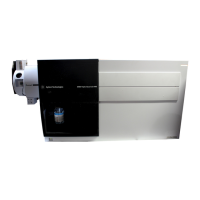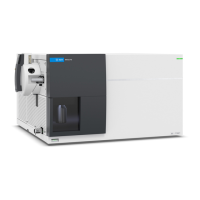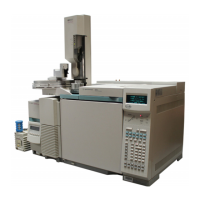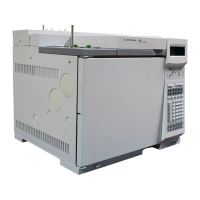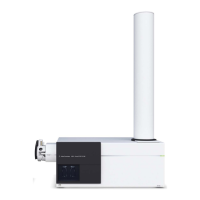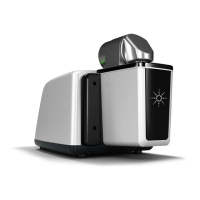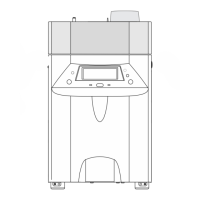Agilent Triple Quadrupole MS and Sensitivity 3
LC/MS ion sources
Agilent 6400 Series Triple Quad LC/MS Concepts Guide 51
Figure 24 Agilent G1978B Multimode Source
Neutral analytes and ESI charged analytes pass through the
divided chamber entering either the APCI Zone or adjacent
zone.
ESI and APCI are essentially incompatible processes because
each needs its own conditions for aerosol drying and electrical
fields. However, it is possible to form ions simultaneously from
ESI and APCI if the two ionization regions are separated in
space.
The HPLC effluent is nebulized using the same sprayer that is
used for a dedicated ESI source. The droplets are emitted into
the “ESI zone,” where a high voltage electrode charges the
droplets and induces ion formation. The ions formed in this
region pass through the source and enter the capillary. Residual
droplets are dried using two infrared lamps (not shown) that
emit at the absorption frequency of water. The vapor and
analyte(s) enter the APCI zone where they are ionized. Ions are
then drawn into the capillary the same way as they would be
with dedicated ESI and APCI sources.

